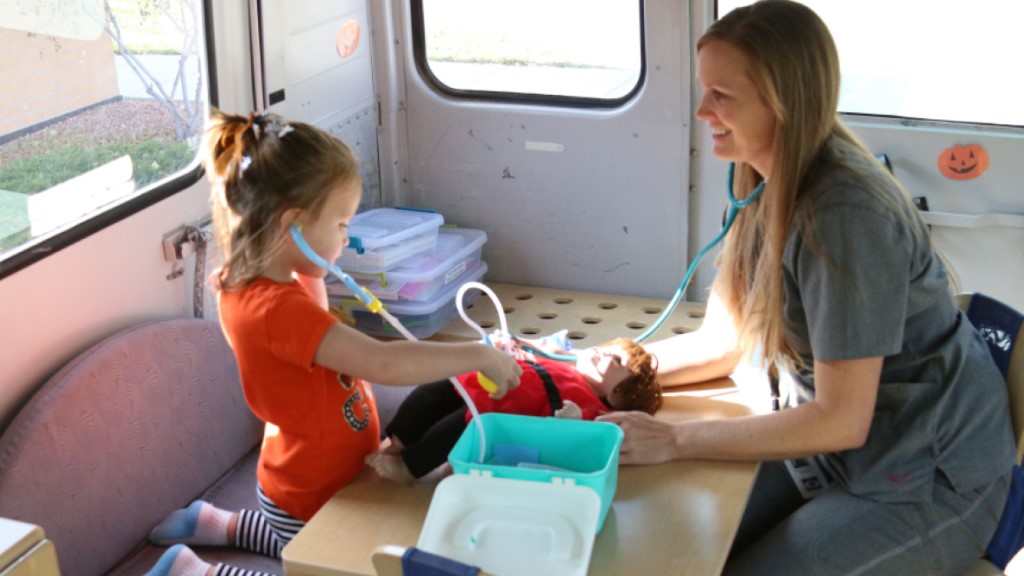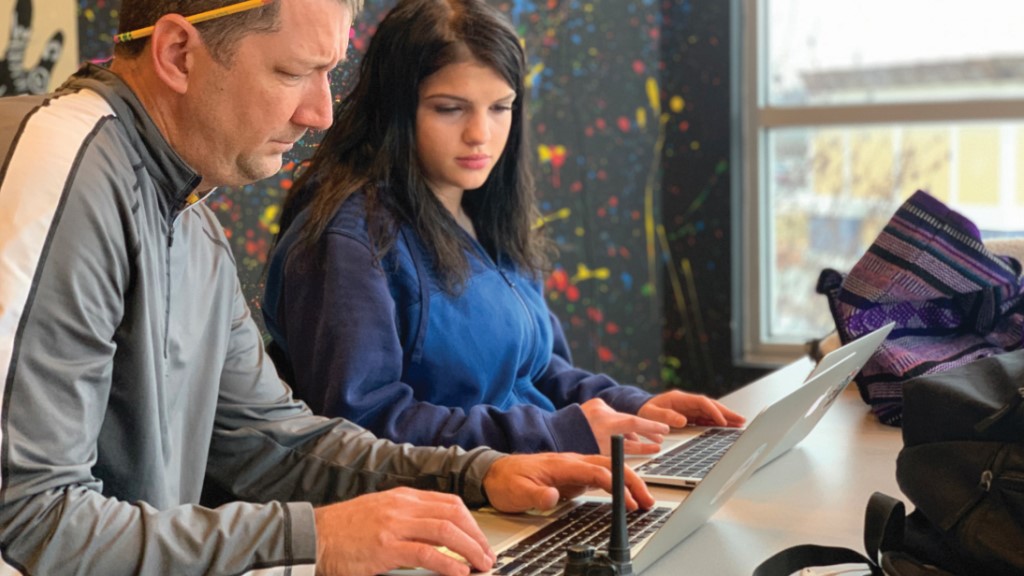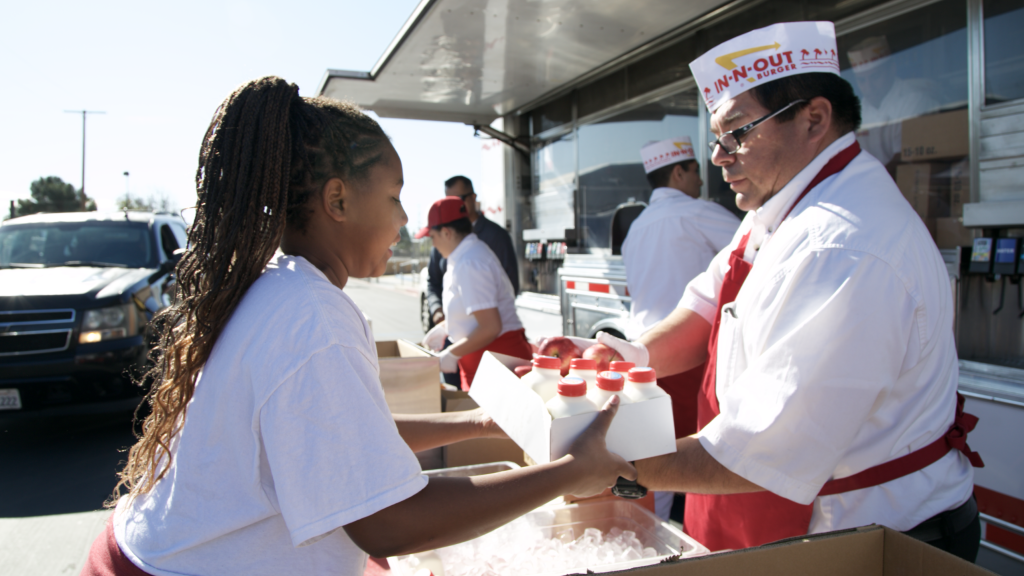Giving at-risk high school students the support and opportunity they need to succeed; bringing medical services, day care, and preschool to a small, far-flung school community; and a districtwide program to help homeless students and their families: These are among the winning programs for this year’s Magna Awards.
For more than 25 years, the Magna Awards, with the support of our sponsor, Sodexo, have been recognizing innovative school district programs. This year, the awards continue to focus on equity in education. Our winning districts—the three Grand Prize winners and the 15 first-place winners—are working to remove barriers to achievement for their underserved and vulnerable students.
We present these winning programs with the hope that you will discover information that you can use in your districts. Our profiles give you an overview of the programs, including evidence of success. We include district contact information so you can find out more from the school leaders and staff who created and manage these initiatives.
Whether it’s at our annual conference or through the pages of ASBJ, we invite you to connect with your peers to gain insights and practical ideas to create more equitable schools for your students.
Serving the Community
Creating a Community District
Fremont County School District #6
Pavillion, Wyoming
Under 5,000 enrollment
A little more than a decade ago, within the 1,300 square miles of Fremont County School District #6, there were no licensed day care providers, no preschools, and no medical clinics. The board and superintendent of the tiny district of about 400 students in the Wind River mountain range embarked on a journey to make their district a community district that served the needs of their unique rural community.
Fremont encompasses the Wind River Reservation, and 30 percent of its students are Native Americans. Many families in the area face poverty and geographic isolation. The board and superintendent set a goal to make the district into a community hub, where all 1,300 square miles were considered part of its campus.
“You need to show families how to take advantage of these services,” says Superintendent Diana Clapp. “It’s not just ‘build it, and they will come.’”

On the Purple Bus, preschool comes to students in remote areas. Photo courtesy of Fremont County School District #6.
Preschool was the first of the three services that the district addressed. Students were coming into kindergarten with gaps—some reading, some chewing on books. A preschool for 3- to 5-year-olds was established at the Wind River Elementary School. However, as Clapp notes, she knew they were still missing children who needed it the most.
The district’s solution was the Purple Bus—a painted school bus that became a mobile classroom for preschoolers whose parents couldn’t travel the many miles to the elementary school. (This program earned Fremont a Magna Grand Prize in 2016.) The Purple Bus serves families in isolated areas, many of them Native Americans. A certified preschool teacher delivers regular lessons to the children, and a certified nurse travels with the bus to handle immunizations and other medical needs of both the children and the families they visit.
Next was the opening of a child care center at the elementary school for infants and children up to age 2. Because of the distances that people had to travel, child care was difficult to find in the area. The child care offered at Wind River Elementary School is open to district teachers and others in the community. It’s taught by a certified child care worker and is open from 6 a.m. to 6 p.m. to accommodate working parents.
Lack of access to health care and wellness screenings, urgent care, dental screening, and mental health services was a major barrier in the district, Clapp says. Many families without funds or reliable transportation would forgo medical visits until the illness became serious. Families didn’t have money to fill prescriptions promptly, even if they were seen by a medical professional.
Wind River High School students helped in the construction of the building, which is housed on the district’s main campus. The Cougar Community Health Center is now a recognized federally qualified health center.
“A lot of people have to decide, ‘Do I take my child to the doctor or pay my electric bill?’” says Fremont School Board member Kristen Benson. “The board had this conception that we are responsible for the whole child and family, making us a community school district.”
The community school programs are seeing results: Childhood on-time immunization rates for Fremont have risen in the preschool-age students from 2 percent to consistently 95 percent to 100 percent; preschool enrollments have grown from the original program serving eight to 12 students annually to 90 to 110 students for the past two years. The rate of Native American or multiracial children participating in the preschool services has risen from little to no participation to 23.7 percent since 2013, nearing the district K-12 averages.
Building relationships with Native American families and others so that they trust the district with their young children is of the utmost importance. According to Clapp, the Purple Bus was the catalyst that allowed the district to offer child care and medical services. “That bus has been the bridge between home, cultures, and schools,” she says. “It’s exactly what we were hoping for, what we envisioned.”
Unschool by Design
Liberty Academy
Liberty Public Schools
Liberty, Missouri
5,000 to 20,000 enrollment
Liberty Academy has no classrooms or teachers—at least not in the usual sense. And the school, housed in an office park, doesn’t look like a school at all. It’s different by design: Its students haven’t done well in traditional school settings.
“School prepares you for life, but school doesn’t look like life,” says Melissa Norris, director of Liberty Academy. “Our school is the closest thing that looks like life. Everything that happens is organic. Kids don’t realize they are doing school because it doesn’t look like school.”
The academy is the alternative high school for Liberty Public Schools in Liberty, Missouri, a community outside Kansas City. The district of 12,800 students is one of the fastest-growing in Missouri. The program has been in existence since 1996, but two years ago the staff, including Norris and lead teacher Art Smith, turned the model on its head. Encouraged by the superintendent and school board, they set out to create a place where their students would be successful.
The 90 high school students who attend Liberty Academy come from the two other high schools in the district, usually through recommendations from teachers and administrators. Many have behavioral issues as well as trauma in their home lives.
Liberty Academy staff receives ongoing training on mental health and psychology. “Our staff understands the brain,” says Norris. “If kids lose their cool and are not OK, we understand what’s going on with their brain, and we don’t take it personally. The culture is nurturing.”
In fact, says Smith, “while they are here, they are getting the closest thing to a family.” The school design reinforces the family atmosphere. “Structure breeds hierarchy,” he says. “Our schools and society have become binary and tech-centric. If you want kids to be whole people, you must design for human connection.”
Teachers are referred to as advisers, and they don’t have classrooms or desks. Students choose a project or an interest they’d like to work on, and they work with their advisers to link the project to standards and class credits.

At Liberty Academy, teachers are advisers who help students design their own projects. Photo courtesy of Liberty Academy.
In the mornings, students choose some physical activity. (Yoga is offered once a week.) They gather for a circle meeting, where they check in with advisors and hear about the outside trips available for the day. Small groups of students go with advisors on trips out in the community: greenhouses, farms, other workplaces in the area. Some trips focus on community service, such as to a homeless shelter in Kansas City. These trips link up with students’ projects and interests. Students follow a six-week burst model, and at the end, they give a defense of their time and work completed to a panel of at least three adults. At the end of the semester, they write a capstone essay and display chosen artifacts for a school and community showcase.
“They are a great example of meeting needs of diverse learners in a way that engages them,” says school board member Kim-Marie Graham. “It’s the way to approach an innovative program: Let it grow and be successful, then it organically moves out to the district.”
Liberty Academy teachers must be able to let go of the usual school hierarchy and tolerate ambiguity, says Smith. They also must want to have close relationships with students, acting as their guides and mentors, not to mention being de facto parents at school.
“The relationship piece is a daily focus,” says Liberty Superintendent Jeremy Tucker. “The staff is equipped to recognize that, and triage with kids as they need to.”
The district started giving the Panorama survey for Social-Emotional Learning in 2018-19. In the area of engagement, Liberty Academy scored in the 33 percentile, with the district average being 28 percent. This shows progress, since academy students often are referred as a result of disengagement from school and the consequences that come with it.
“We redefine what schools are,” says Smith. “We enjoy being what we need to be for each kid.”
Help for the Homeless
Community Wellness Program
Moreno Valley Unified School District
Moreno Valley, California
Over 20,000 enrollment
When Connie Edwards was hired to be the district wellness liaison at Moreno Valley Unified School District, she researched the needs of the families in the 30,000-student district. She found that some students weren’t coming to school because they had no shoes. So, she started a fundraiser called Happy Feet that collected 33,000 pairs of tennis shoes for children. “I realized we had a lot of needy families,” says Edwards. “I know what the district needed. It needed a school-based family center to support these families.”
Moreno Valley is in the Inland Empire region of California, 70 miles east of Los Angeles. The district encompasses a small portion of the city of Riverside and parts of unincorporated Riverside County. It has approximately 6,000 students that are considered homeless; the majority are living with other families due to financial hardship. There are approximately 850 families that are considered fragile—living in their cars, shelters, or with friends and relatives.
Edwards started with donations stored in cubbies in her district office. The district opened the Community Wellness Center in 2016 in a one-room portable building adjacent to an elementary school. It has expanded to four large classrooms in a portable building converted to an office and resource center, a food pantry, a clothes and shoes room, a mindfulness and yoga studio that includes social-emotional learning training by a certified coach, and a living “space” that houses a bathroom, shower, couch, washing machine and dryer, extended folding table, microwave, and refrigerator. The center has helped 12,000 families since its inception.
“If we help their families, we help their children. You can’t get to critical thinking until you take care of basic needs,” says Superintendent Martinrex Kedziora. “I tell the community that malnutrition is not cured with one meal, it’s generational. Families get in the situations but don’t know how to get out of them.”
Moreno Valley school board President Marsha Locke says she sits on panels that deal with students with chronic attendance issues. “We found out they aren’t coming because they don’t have shoes, money for gas and lunches, and they are ashamed of their clothes,” she says. “We need to get proactive before you get to that point.”
In addition to the ongoing support throughout the year, the center holds a Summer Health and Resource Fair involving 72 community and county partners to distribute 600 backpacks, 600 pairs of shoes, 100 free haircuts, immunizations, teeth cleaning, vision check-ups, health services, and numerous booths with information on county and state services.
The first annual Health and Resource Fair, in the summer of 2017, reached over 2,000 families and children. During the summer of 2018, expanded services included clothes closets (1,000 items) and medical insurance enrollment to over 2,200 families. Recently, the 2019 Health and Resource Fair was held and had a food pantry. All attendees were provided with fresh fruit, vegetables, and nonperishable items.

Moreno Valley Unified School District’s Community Wellness Program holds a back-to-school event with local businesses and other partners. Photo courtesy of Moreno Valley Unified School District.
District officials see that standardized test scores are improving. New 2019 state test results show a 3.2 percent increase in English Language Arts (ELA), which translates to 402 more students on track than the previous year and exceeds county and state growth rates of 1.4 percent and 1.0 percent. For ELA growth in 2019, the district ranked second among 37 similar school districts in California. Math shows a 1.9 percent increase in 2019 (a 5 percent increase since 2015), more than both the county and state, which grew 1.3 percent and 1 percent, respectively.
Edwards became a certified mindfulness instructor out of her recognition that the center needed to help parents with emotional as well as physical needs. “We work on healing them from inside, to bring peace in the storm,” she says. She holds mindfulness meditation and yoga classes for parents and their children. The classes, which have been successful, give parents and children a chance to do something as a family.
“I love to create support programs where families don’t feel helpless,” says Edwards. “If you come to us, we will help you.”

Share this content